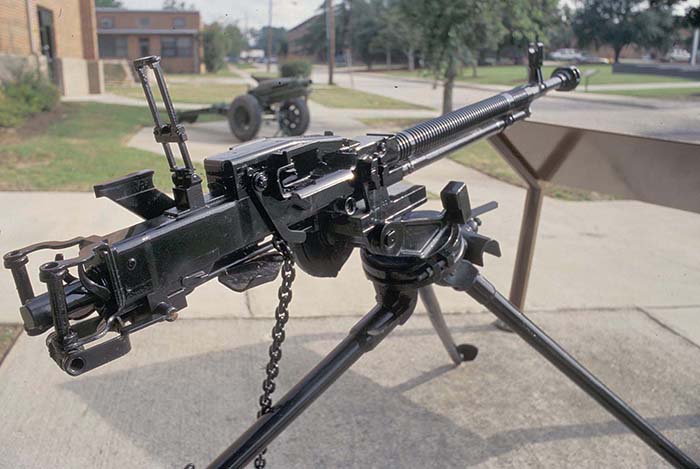By David Truby
Considering that you have to look to the last century to find a classic submachine gun design that combines both function and beauty, we’ll head back more than a few military generations, to meet the British Lanchester submachine gun.
The Lanchester is a product of British gun makers from that pre-WWII era of solid, finished, fine woods and robust, deep-blued steels, who built this firearm worthy of the traditional British Empire military stamp. This solid weapon was the last in a long lineage of well-bred ordnance royalty that came to a clattering end with the evolutionary apocalypse of Sten and Sterling stamped parts weaponry.

The Lanchester is not an original British design; it was taken directly from the design of Hugo Schmeisser’s WWI German MP18, later redesigned as the MP28. Yet, the Lanchester was carried into battle wherever British battle flags have flown from 1941 through the Falklands.
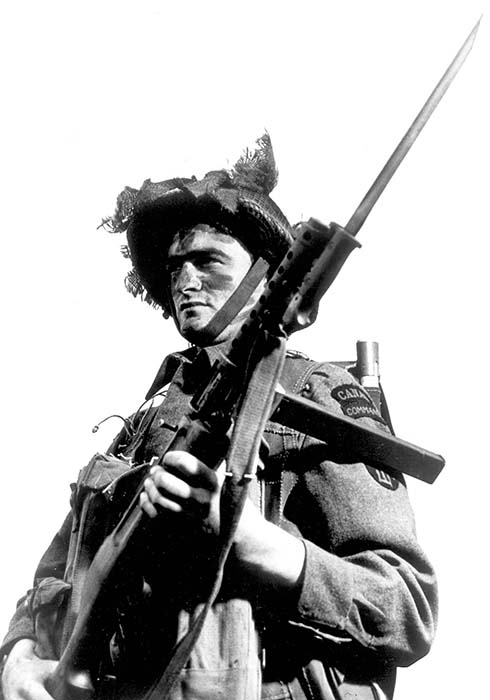
As the late Major Frank Hobart noted, “Although this was a very well-designed and well-built weapon, extremely reliable, it was virtually obsolete before it even entered service and saw only limited action. However, it stayed on the active service list in many ships’ armories through the 1970s.”
The Lanchester was a direct result of immediate need. After Dunkirk, Great Britain was in dire need of every manner of small arms. German invasion of the U.K. was imminent by almost every measure. The only submachine guns available were Thompsons from America, and all of those went to the British Army, forcing the RAF and the Royal Navy to scramble for small arms on their own.
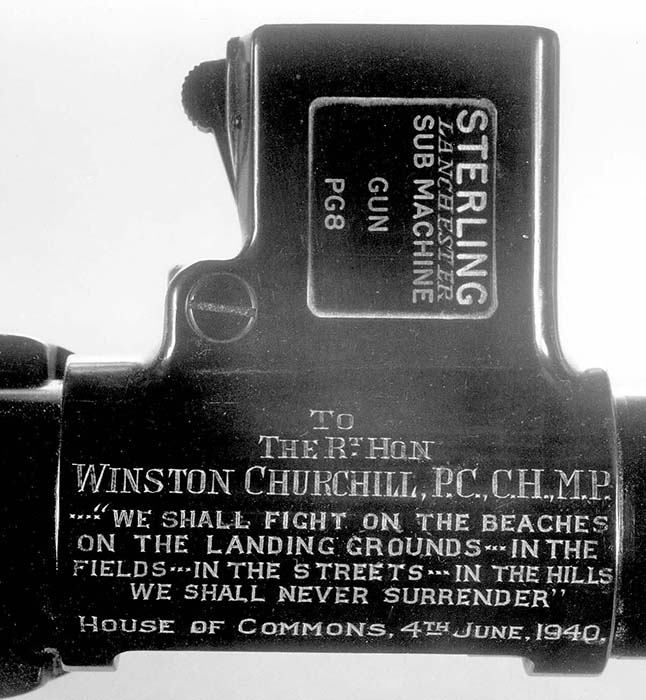
Sterling Armament, Ltd. was given a contract in the summer of 1940 to produce a prototype within four months and the project was turned over to George H. Lanchester, a veteran engineer, who had owned his own company, but had been seconded to Sterling for the war’s duration. Lanchester made only minor modifications to the German MP28 to produce the weapon that carried his name. Prototype testing, then, field trials began in November of 1940 for the Royal Navy, as the RAF had bailed out of the project when it became apparent that Hitler had scuttled immediate invasion plans.
The first production contracts for the Lanchester were let in June 1941, with the final contract let in October of 1943. Each weapon was projected at a cost of £14. Not only was the per-gun price high, the Lanchester was a complicated gun to produce, which is not conducive to immediate need-them-yesterday wartime requirements. For example, production over a 28 month period averaged 3,410 Lanchesters per month versus 47,000 Sten Mk II guns.

The initial 50,000 Lanchester production and assembly run was accomplished at four different factories, and the majority of weapons went to the Royal Navy. The original production Mk 1 Lanchesters had a select fire feature and a tangent rear sight. The select fire mode was soon judged to be unnecessary, so the auto-only version became known as the Mk 1*, which was the final basic design. Estimates of those original Mk1 Lanchester numbers are less than 200 guns.
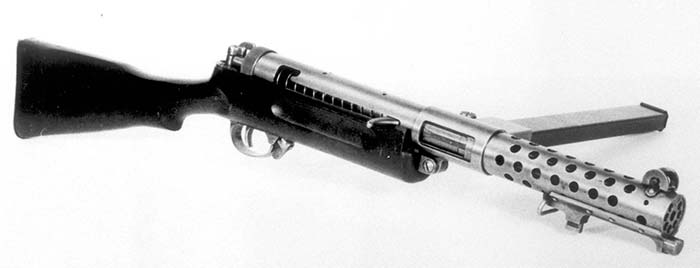
(Col. D. G. Rashen, Royal Military College of Science at Shrivenham)
Even while he was pushing the original design through production, George Lanchester and his team at Sterling saw the Sten gun’s competitive development and were working to lighten their own weapon. The result was the little known Light Lanchester series of three models which never went beyond prototype development, other than to evolve a design generation later into what some experts said was the Patchett gun, which carried the name of its production engineer, George Patchett.
Not only was the Lanchester submachine gun a complicated and expensive firearm to produce, it was heavy, weighing more than the service rifles of the period. As Laidler and Howroyd wrote of the Lanchester, “It was built like a battleship.”
The Lanchester operates on the blowback principle, firing from the open bolt. That bolt, a massive piece of steel, has a separate firing pin nearly the size of an ice pick. The cocking handle is permanently attached to the bolt. The safety is a mechanical one, in which the cocking handle is pulled to the rear of the receiver and then moved upwards into a notch at the rear of the slot.
The Lanchester uses a shortened beechwood stock, much like that of the SMLE service rifle. The gun’s magazine housing is made of solid brass and there is a lug for the long British No. 1 bayonet. There is also a brass butt plate with a trapdoor for storing cleaning material inside the stock. Later models used an alloy butt plate.
The sights are a simple flip-over rear marked for 100 and 200 meters. As with most weapons of its type, the recommended service range is 100 meters or less. The issue magazine is 50-rounds, but the 32-round Sten magazine, which fits in the Lanchester, was always a better choice for combat due to balance and function.
When it comes to maintenance, the Lanchester is one of the easiest military weapons for that chore. After the weapon is carefully cleared and the magazine removed, turn the large locking catch lever at the rear of the receiver and draw the cocking handle to the rear of the receiver. This brings out the operating spring and bolt. The weapon is now ready for cleaning, then simple reassembly.
The Lanchester went on active service in the late fall of 1941. The first officially documented action for the Lanchester was in December of 1941, when the British army’s No. 3 Commando borrowed four navy Lanchesters for their famed amphibious raid on the island of Maaloy and Vaasgo Harbor in occupied Norway. Armed with Thompsons and Lanchesters, the British army commandoes reduced the German counterattacks to what the after action report called “a shambles.”
Period news reports and archive film clearly show the Lanchester in the hands of Royal Navy sailors during the defense and fall of Hong Kong and Singapore in February of 1942.
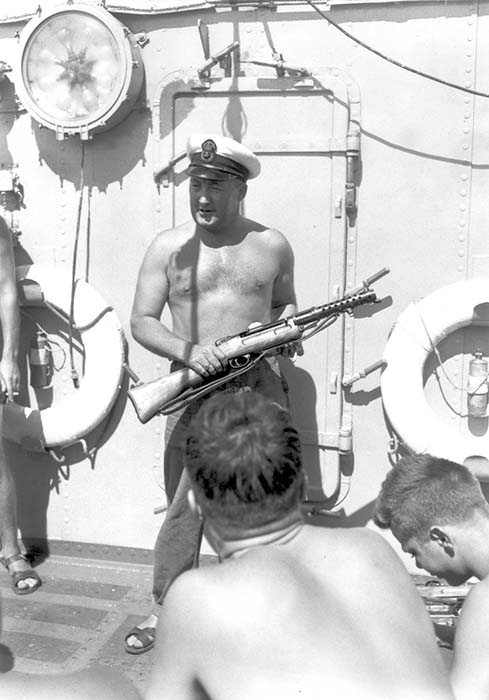
(W.J. Russell/DND/Public Archives of Canada/PA-145888)
Initial after action reports noted of the Lanchesters, “…superb job during all phases of deployment…men reported excellent handling effectiveness…Complete confidence in these combat weapons.”

In February of 1942, No. 12 Commando conducted a daring raid on the top secret German radar installation near the coastal village of Bruneval, France, to recon and appropriate the German technology. The attack and withdrawal was carried out partially with the cover of Lanchester submachine guns, again drawing high praise from the British warriors.
In March, Lanchesters were chosen again, this time by the men of No. 2 Commando for their raid on the German dry dock ship repair facility at St Nazaire, also in occupied France. In August, a mixed group of Royal Marine commandoes and No. 4 Commando were armed with Lanchesters when they had special mission duty in support of a larger Canadian infantry unit in a larger scale amphibious assault, which failed, near Dieppe.
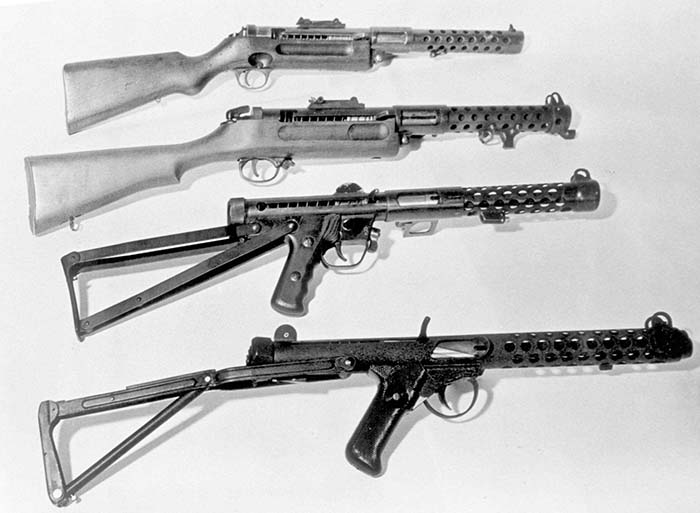
One of its classic missions was that carried out by the men of No. 2 Special Boat Service and a landing party of Royal Marines in October of 1942, when a delegation of senior Allied officers, led by American Maj. Gen. Mark Clark, met with the French general commanding the defense of Algeria, in hopes of allowing the Anglo-American invasion to proceed without resistance. The Brits were armed with Lanchesters.
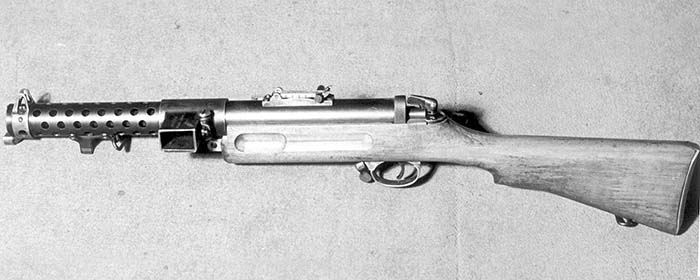
Later, commandoes carried Lanchesters in the invasion of North Africa, Sicily, and the Italian mainland. The Royal Navy carried Lanchester-armed warriors into battle against the Japanese in the Pacific as well as against German E Boat raiders in the English Channel and the Aegean Sea. The Lanchester found combat in India, Burma and all over Southeast Asia.
In all these operations, the Lanchester was praised universally in comparison with the Thompson and Sten guns, e.g., “the weight, accuracy and dependability of the Lanchester make it the most desirable…”
Despite being officially obsolete, the Lanchester soldiered on during the post WWII period in various U. K. empirical disturbances. Both the British and the Dutch navy and marines used Lanchesters against nationalist guerrillas in the East Indies through the late ’40s. Despite the issue of new Sterling submachine guns, Lanchesters were used in Kenya during the Mau Mau “troubles” there in the early ’50s.
In the Korean conflict, Royal Marines assigned shore security detail during and immediately after the Inchon landings carried Lanchesters. Both British and Canadian naval crews used Lanchesters for security duty when inspecting small craft along the coastal waters of Korea.
Lanchesters also went ashore in Malaya and in Egypt during the Suez incursion. In the 1960s, accurate fire from the old Lanchesters repelled guerrilla assaults from small boats against British navy vessels. Some of the British warships still had Lanchesters in their armories during the Falklands War, though the last had been supposedly and finally retired in 1971.
The Lanchester is one fine firearm with a great, if limited, service record, which raises a valid question: If it was so good, why did it see only limited combat action? The Lanchester faced two major problems: technology and history. That, combined with the rapid development of the Sten gun, took it out of a major combat role almost before the initial production models left the Sterling factory.
Major Hobart said, “If the Sten gun designs had been in house a bit earlier, the rebuild of the MP28 into the Lanchester would have been abandoned and it would have been the machine carbine that never was, a mere footnote in ordnance history.”
Even as the Lanchester was entering production, the Sten gun prototypes were already being combat field-tested in limited special mission actions. Also, as the fear of imminent German paratroop attack and an invasion of England had subsided by 1941, the Army and RAF had canceled their massive orders for Lanchesters, seeing that the newer, far lighter and cheaper Stens were ready for production.
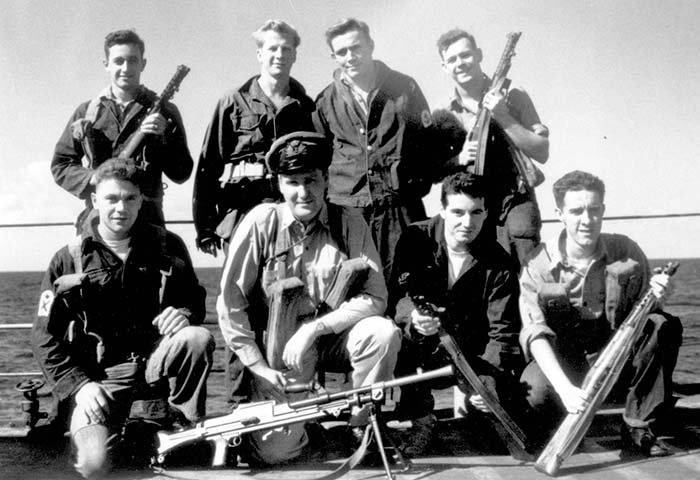
According to which source you read, between 75,600 and 80,000 Lanchesters were produced. The weapon was declared obsolete by the UK military in 1979. Today, apart from the few still on historical display-only in British ship armories, the remainder are in various military museums. A large number were simply destroyed by the UK. What few civilian-owned originals remained belong to private collectors. And, of course, there is a small supply of Dewats and replica models. There was a brief attempt to produce rebuilt Lanchesters for the American Class III market in the late 1980s, thanks to the late Bill Whitford, and his Cottage Industries, but the 1986 machine gun ban ended that endeavor.
Full cycle, then, the submachine gun that almost never was, has become the submachine gun that never would be again.
I would like to thank the following for their personal correspondence and interviews: Frank W.A. Hobart, D.G. Raschen, Albert Jenkins, Donald G. Thomas, Richard Nelson, Bill Whitford, Thomas B. Nelson and Herbert J. Woodend.
| This article first appeared in Small Arms Review V9N10 (July 2006) |




